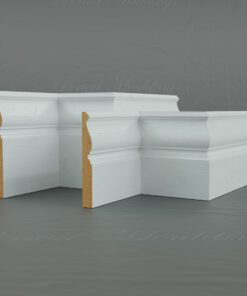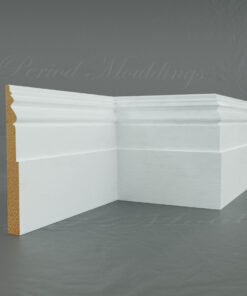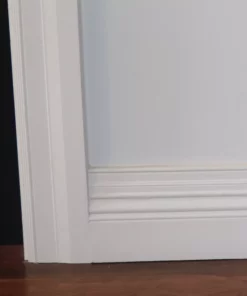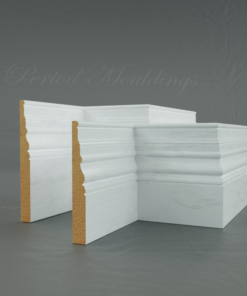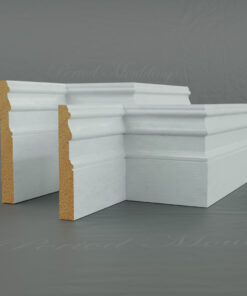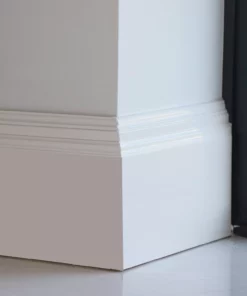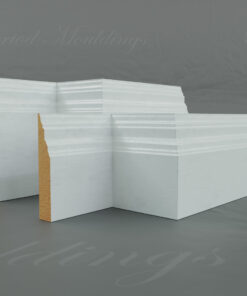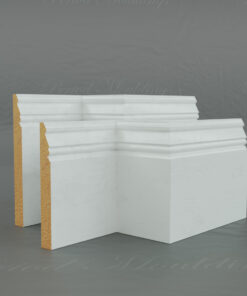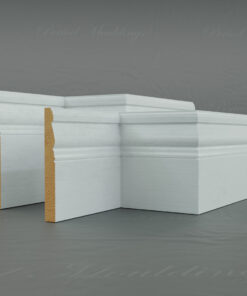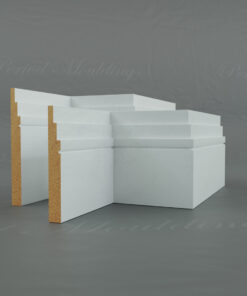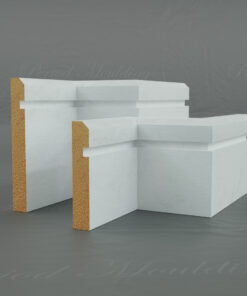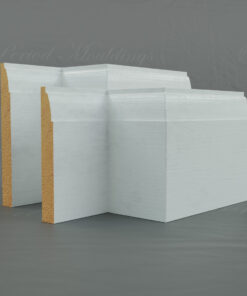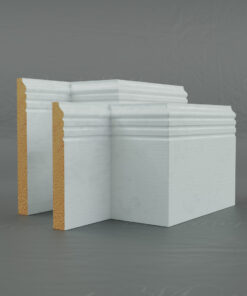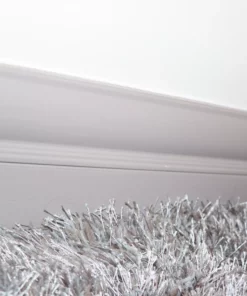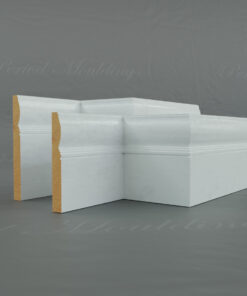You have taken the time to choose your skirting boards wisely and taken into account the type of material and style that is suitable for your home. And now it is time to fit them. We have put together a short guide to help you with the preparation, fitting and after-care of your skirting boards.
Contents
- Buying your skirting boards
- Before starting to fit your skirting boards
- Consider your wall fixings
- Fixing the boards
- Cutting lengths and corners
- After fitting your boards
Buying your skirting boards
The material you choose is a big factor in how easy the skirting board might be to fit, as some materials differ in terms of machinability and how well they take a nail or screw or adhesive, so you need to take this into account. Also, most wood will come in standard cut lengths, which are unlikely to match exactly what you need. So you will need to cut them to the required length yourself.
In terms of how much skirting material you will need, it is advisable to use a tape measure to work out the overall length, but add around 10-15% as a contingency and to allow for small errors, and always try to buy the longest lengths possible to reduce jointing.
Georgian Skirting Boards
Exclusively From Period Mouldings
Before starting to fit your skirting boards
Existing skirting boards are likely to still be installed in your home and you may have decided to simply replace them to upgrade or freshen up the home. Therefore, you will need to use a crowbar and/or a chisel to prize off the existing boards, being careful not to damage the structure of the walls behind.
You might also want to consider coating the back of your boards with wood preserve before fitting. As this side of the board is against the wall, it is more susceptible to cold and moisture and needs the preserve to protect it. If using natural wood you need to consider what your eventual finish is going to be on the outward-facing side of the skirting boards. At this point, if you need to sand the boards to allow for later coating of oil, varnish or paint, it is easier to do that now before you fix them to the wall.
Finally, you need to line up your tools and materials, which can include: adhesive, decorators caulk, wood filler, nails and screws, a mitre saw, a hammer, a tape measure and a silicone gun.
Consider your wall fixings
If you have masonry walls, it is likely that you will use screws or nails to fix your boards. If you have a stud wall you should use oval wire nails. In most cases you can try to use the old fixing points left by the previous skirting boards. This makes absolute sense as long as they are structurally sound after you have removed the old boards, and it saves you a job marking everything out.
You might prefer to use a strong adhesive to fix the boards however, and that is fine, but you need to make sure your walls are straight, as it is harder to fix a board with wall adhesive if the curve in the wall is working against the board, at least a screw or nail secures it immediately.
Victorian Skirting Boards
Exclusively From Period Mouldings
Fixing the boards
Try to start with the longest length you have, and use a tape measure to mark the length required on the board. You can then saw it to length as carefully and as accurately as you can.
It is advisable to mark each board at around 600mm intervals, with regards to fixing them. Of course, you can be guided by the fixing points that already exist, if you have that luxury. Find a fixing point as high up on the board as possible, bearing in mind that with period skirting boards, there will be curved and moulded detail that will prevent you fixing the board at the very top of it.
You should also be aware of cables or pipework running behind the skirting boards. If you are using screws to fix the boards you should drill a pilot hole first of all, and likewise, if you have a stud wall, you will need to find the studs in the wall first, and make sure you are fixing the skirtings to the studs.
If you are using adhesive, make sure it is spread evenly on the back of the board and make sure you press the board in place to secure it, and for as long as possible.
Cutting lengths and corners
For profile cutting internal corners you may need to use an off-cut piece of skirting to measure your angle required, and to carry out some practice. If you have a profile gauge this will help you. Of course you need to be careful and precise to ensure you cut a length that has a good finish and fits neatly to the already-secured piece of skirting.
You should also plan your external corners carefully. Where two lengths meet you need to cut both ends to a 45˚ angle so that they fit neatly at an external point. Ideally, you should plan to fit these external corner lengths in pairs, so that you can adjust the angles accordingly and play around with them so they meet accurately, before you fix them to the wall.
Edwardian Skirting Boards
Exclusively From Period Mouldings
After fitting your boards
Once any adhesive has dried or you are happy that the boards are secured to your wall, you can fill
any holes in the boards, ie. if you have used countersunk screws you can fill in the holes with wood filler. You can then fill in any gaps running against the wall with decorators caulk, and paint them when this is dry.
You should now be left with secure and durable skirting boards, which will complement your home’s interior design and provide the finish your room needs.
Tips: Here are the tools required for fitting your new skirting boards:
- Tape
- Hand or Chop saw
- Screws / nails
- Adhesive
- Decorator’s caulk
- Profile gauge (not essential)
- 45 degree angle jig (alternatively a chop saw)
We specialise in Georgian skirting boards, Victorian skirting boards, Edwardian skirting boards and Contemporary skirting boards.
Contemporary Skirting Boards
Exclusively From Period Mouldings



